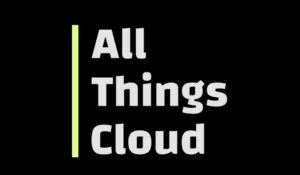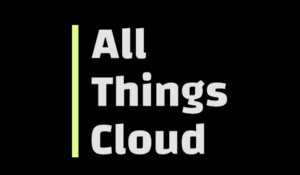Top 10 Cloud Security Risks in 2025 – and How to Mitigate Them
The cloud is the backbone of modern business, fueling innovation and agility. But with its power comes evolving security risks. As we approach 2025, organizations must stay vigilant to protect their cloud environments. Below is a detailed look at the top 10 cloud security challenges, ranked by prevalence (see chart below), along with practical strategies to mitigate them. From misconfigurations to emerging AI-driven threats, proactive security is your competitive edge.

This chart ranks the top 10 cloud security risks in 2025 by prevalence, based on 2024 industry data. While misconfigurations lead, emerging threats like AI-driven attacks and supply chain breaches demand attention.
- Misconfigured Cloud Settings
- The Risk: A single misconfiguration such as an open S3 bucket or overly permissive access policy can expose sensitive data to the public internet. In 2024, misconfigurations were linked to 60% of cloud breaches, according to IBM’s Cost of a Data Breach Report, making this a persistent threat.
- Mitigation: Use automated configuration management tools like AWS Config or CloudSploit to continuously scan for errors. Schedule quarterly audits to catch human oversights and train teams on cloud provider best practices, such as locking down storage buckets by default.
- Weak Identity and Access Management (IAM)
- The Risk: Poor IAM practices, like reused passwords or unrevoked access for ex-employees, give attackers easy entry. A 2024 Verizon DBIR noted that 80% of breaches involved compromised credentials, many tied to weak IAM.
- Mitigation: Mandate multi-factor authentication (MFA) for all cloud accounts, using tools like Duo or Google Authenticator. Implement role-based access controls (RBAC) to restrict permissions and review IAM policies monthly to remove outdated access.
- Data Breaches
- The Risk: Unprotected cloud data, like customer records or intellectual property, is a prime target for attackers. Sophisticated techniques, such as exploiting stolen credentials or unpatched vulnerabilities, amplify the risk. For example, a 2024 breach exposed millions of records due to an unencrypted database.
- Mitigation: Implement end-to-end encryption for data at rest and in transit, using standards like AES-256. Pair this with robust key management systems, such as AWS KMS or HashiCorp Vault, to ensure only authorized users can decrypt data.
- Insider Threats
- The Risk: Employees or contractors can compromise cloud environments, intentionally (e.g., data theft) or accidentally (e.g., sharing credentials). A 2024 Ponemon Institute study found 20% of breaches involved insiders, highlighting the human factor in cloud security.
- Mitigation: Enforce least-privilege access controls to limit what users can do based on their roles. Deploy user behavior analytics tools, like Splunk or Securonix, to detect anomalies, such as unusual file downloads or login patterns.
- Shadow IT
- The Risk: Employees using unapproved cloud tools, like personal Dropbox accounts, create security blind spots. A 2024 Gartner report estimated that 30-40% of cloud usage in enterprises is shadow IT, bypassing IT oversight.
- Mitigation: Deploy cloud access security brokers (CASBs), such as Netskope or McAfee MVISION, to discover and monitor shadow IT. Educate employees on approved tools and establish clear policies to reduce unauthorized usage.
- Insecure APIs
- The Risk: APIs connect cloud services but are vulnerable if not secured properly. Weak authentication or poor input validation can allow attackers to manipulate or steal data. For instance, a 2024 API exploit at a major retailer exposed customer payment details.
- Mitigation: Enforce strong authentication protocols like OAuth 2.0 or OpenID Connect. Validate and sanitize all API inputs to prevent injection attacks, and conduct regular penetration testing to identify vulnerabilities before attackers do.
- Ransomware in the Cloud
- The Risk: Attackers encrypt cloud data and demand ransom, disrupting operations and eroding trust. Cloud-specific ransomware, like variants targeting SaaS platforms, surged in 2024, with attackers exploiting backups synced to the cloud.
- Mitigation: Maintain air-gapped backups (offline and isolated from the network) to ensure recovery without paying ransoms. Test your disaster recovery plan quarterly, simulating a full restore to verify data integrity and speed.
- Compliance Gaps
- The Risk: Failing to meet regulations like GDPR, CCPA, or SOC 2 can result in hefty fines and reputational damage. For example, a 2024 GDPR violation led to a €50M fine for a company with misaligned cloud practices.
- Mitigation: Map your cloud usage to specific compliance requirements using frameworks like NIST 800-53. Automate compliance checks with tools like AWS Audit Manager and conduct annual third-party audits to ensure adherence.
- AI-Driven Threats
- The Risk: Attackers are increasingly weaponizing artificial intelligence to execute highly sophisticated attacks targeting cloud environments. AI-powered tools enable hyper-realistic phishing campaigns, such as emails tailored to individual employees using data scraped from social media or public cloud leaks. In 2024, a financial firm reported a breach where AI-generated deepfake voice calls tricked staff into sharing cloud admin credentials. Additionally, AI-driven reconnaissance tools can scan cloud infrastructures for misconfigurations or weak endpoints at unprecedented speed, making traditional defenses less effective. As AI adoption grows, these threats are expected to surge in 2025, exploiting the complexity of cloud ecosystems.
- Mitigation: Counter AI with AI by deploying advanced threat detection platforms, such as Darktrace or CrowdStrike Falcon, which use machine learning to identify anomalies like unusual login patterns or data exfiltration attempts. Secure your own AI systems—whether used for analytics or automation—with strict access controls, such as role-based permissions, and monitor their activity for signs of tampering. Regularly train employees on recognizing AI-enhanced phishing, using simulations that mimic deepfake emails or calls. Finally, integrate threat intelligence feeds (e.g., Recorded Future) to stay updated on evolving AI attack techniques.
- Supply Chain Attacks
- The Risk: Supply chain attacks exploit vulnerabilities in third-party vendors, software, or services integrated with your cloud environment, creating ripple effects across organizations. The 2020 SolarWinds attack, which compromised cloud-connected systems via a tainted software update, remains a stark example, and similar incidents grew in 2024. For instance, a cloud-based collaboration tool’s compromised API token exposed customer data across multiple enterprises. As businesses rely on an expanding web of cloud vendors—SaaS platforms, managed service providers, and open-source libraries—the attack surface widens. In 2025, attackers are likely to target smaller vendors with weaker security to infiltrate larger cloud ecosystems.
- Mitigation: Conduct thorough vendor risk assessments before onboarding, evaluating their security posture, compliance certifications (e.g., SOC 2, ISO 27001), and incident response plans. Use tools like Snyk or Dependency-Track to monitor software dependencies for vulnerabilities, especially in open-source libraries. Establish contractual agreements requiring vendors to notify you of breaches within 24 hours. Develop and test a supply chain-specific incident response plan, simulating scenarios like a compromised SaaS provider, to ensure rapid containment and recovery.
The cloud’s potential is vast, but so are its risks if left unchecked. As the chart above shows, while misconfigurations and weak IAM dominate, emerging threats like AI-driven attacks and supply chain breaches are gaining ground. Proactive security is not just a necessity—it’s a competitive advantage. What’s your organization doing to tackle these challenges in 2025? Share your top cloud security tip in the comments or DM me for deeper insights!
#CloudSecurity #Cybersecurity #TechTrends2025 #RiskManagement #Innovation



.jpeg)